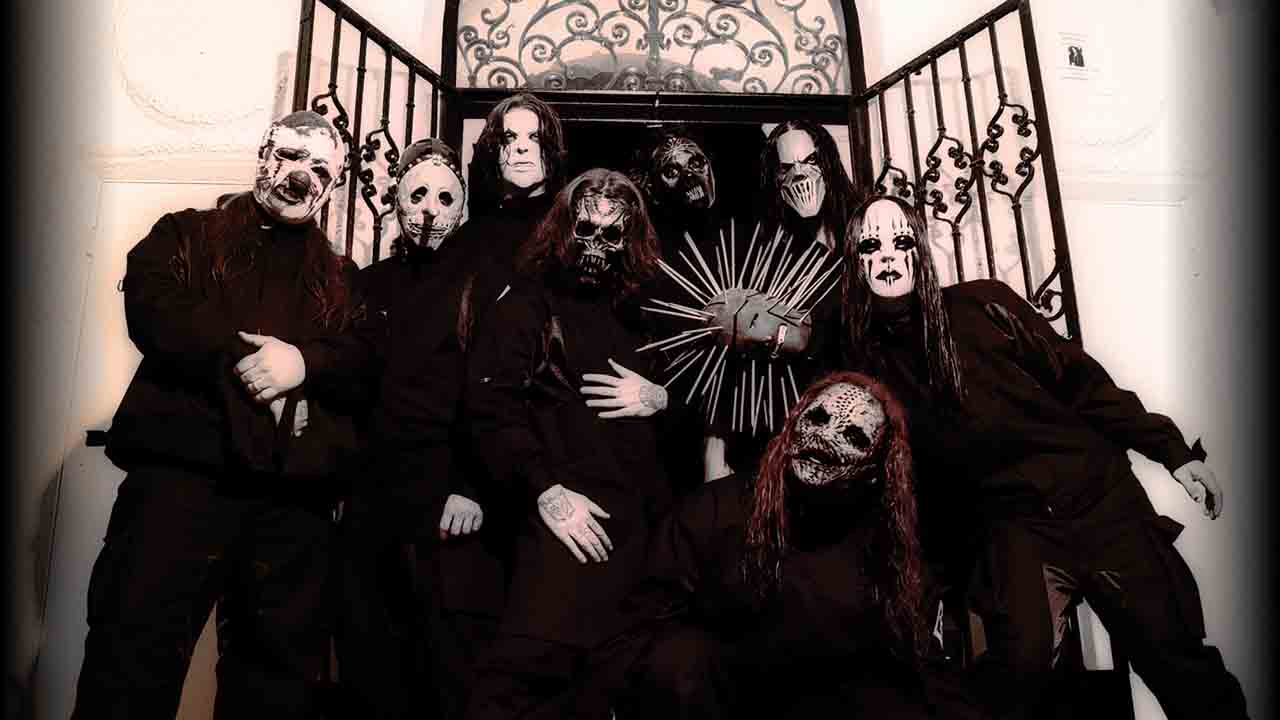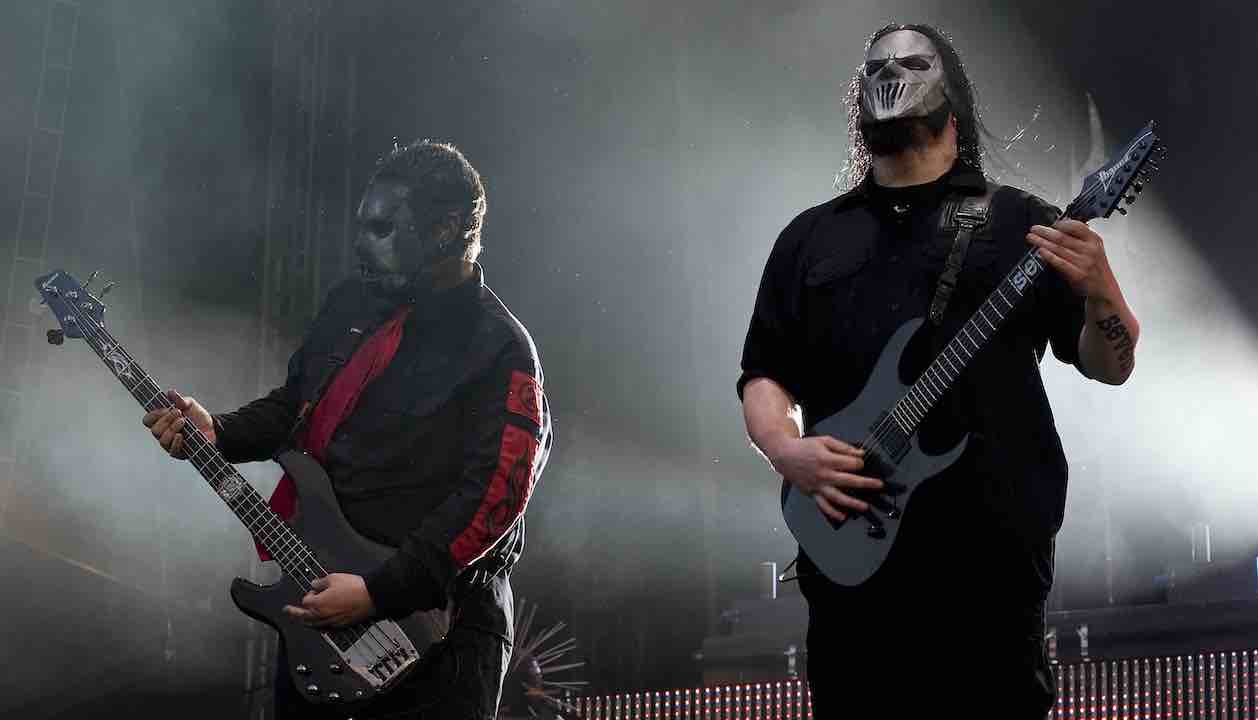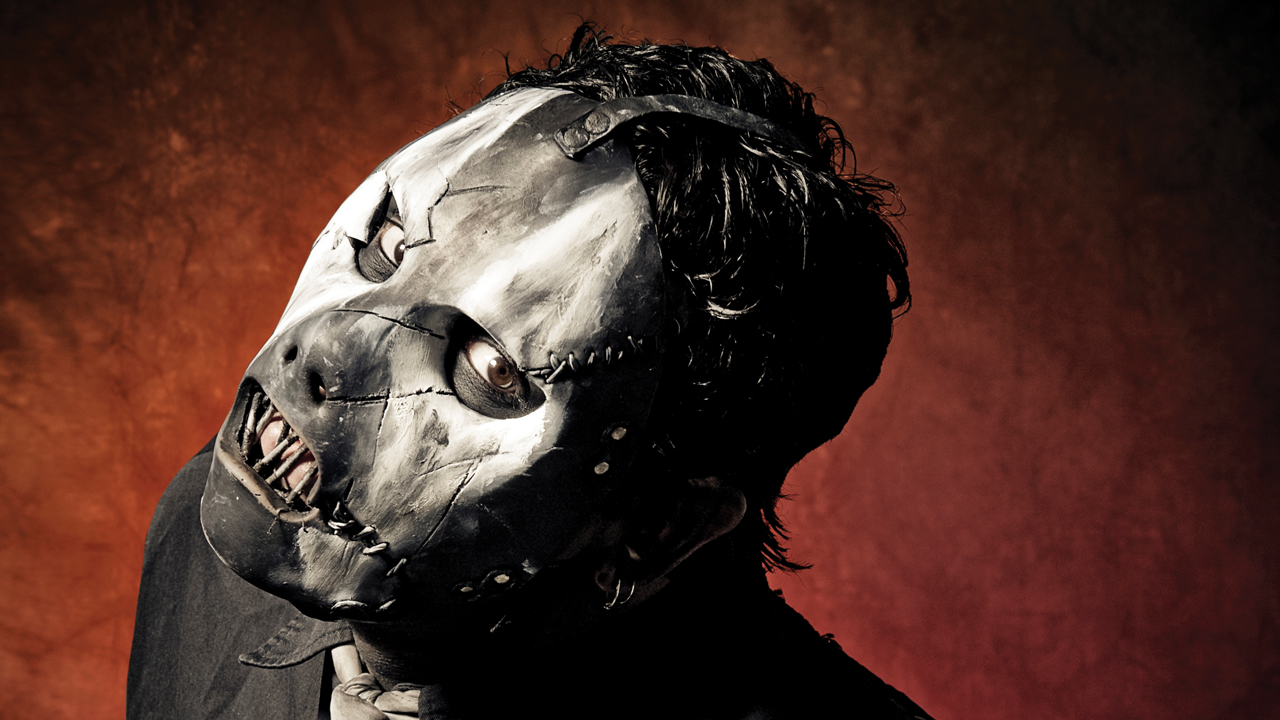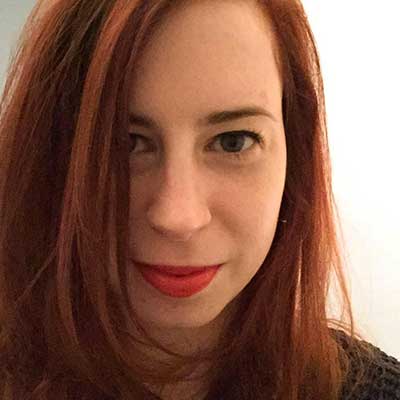“Yesterday we lost our brother, and the world seems a little smaller because of it,” began Corey Taylor. “He had the biggest heart of anyone I’ve ever known, and he had the greatest soul I’ve ever had the privilege to know. He was everything that was wonderful about this band and about this group of people. The only way I can sum up Paul Gray is love. Everything he did, he did for everyone around him. Whether he knew you or not. And that’s what he’s left behind for us, is absolute love.”
On May 25, 2010, the members of Slipknot filed into a room to face the press, on one of the bleakest days of their lives. Unmasked, heads bowed and choked with emotion, they paid tribute to their friend and bandmate, Paul Gray. The previous day he’d passed away from an accidental overdose of prescription drugs, at just 38 years old.
It was hard to comprehend. Slipknot had always seemed combustible yet invincible – nine individual, larger-than-life characters who came together as a unit onstage. Barely a year before, they had played their career-best show as first-time headliners at Download. Bassist Paul, aka The Pig, aka #2, appeared in a black uniform, steadily headbanging and riffing while chaos erupted around him. To the outside world, everything was fine.
Sadly, those close to Paul knew he’d been battling demons for a while. There had been a headline-generating arrest for drugs and drink-driving in 2003, sobriety, relapses and recent treatment for addiction. When his pregnant wife, Brenna, and their family had tried to stage an intervention to prevent Paul from harming himself, he checked into a hotel. He never returned home.
Although fans knew Paul as part of the nine, he had a low public profile, rarely speaking to the media. During the press conference, percussionist Shawn ‘Clown’ Crahan, who co-founded Slipknot with Paul, wanted the world to know how devastating his death was.
“It’s very important that everybody on the outside of us understands that Paul Gray was the essence of the band Slipknot,” he said. “Paul was there from the very, very beginning. And none of us would be on the path that we’re on right now in life, or have the sorts of lives that we have, without him.”
- Every Slipknot album ranked from worst to best
- Slipknot’s Mate. Feed. Kill. Repeat: the secret debut album that launched the legend
- The definitive history of every Slipknot mask
- The 40 best nu metal songs of all time
Paul Dedrick Gray was born in LA on April 8, 1972. He had a difficult and itinerant childhood, and his father died by suicide. It was his older brother, Jay, who introduced him to the music that would change his life – Black Sabbath, Lynyrd Skynyrd, Led Zeppelin, The Doors, The Stones, The Beatles, Alice Cooper and Kiss. In sixth grade, aged 11, he got Suicidal Tendencies’ self-titled debut, which fuelled a desire to learn the guitar. But it was seeing a nascent Slayer touring the merciless Hell Awaits that made the biggest impact on the young Paul Gray.
“That changed my world,” he recounted in Paul Gray: Behind The Player. “I was just, ‘I gotta get a real guitar and actually do it.’ Seeing them up there and the red lights and the smoke and it was all evil, I thought it was the coolest thing ever. So I begged my mum for a guitar, and she finally got me one. It was actually a badass guitar, it was a Gibson Flying V and it was left-handed, and it ruled. I never took lessons or anything, I was always self-taught, listening to albums and just trying to figure stuff off of that.”
Growing up with little money, his family were “living in shitty roach- infested apartments”, and by age 14 Paul was out on his own, struggling with homelessness, bouncing between friends and locations. He entrusted his prized guitar to a friend for safekeeping – only to later discover it’d been sold for an 8-ball of speed. Eventually, he managed to procure a replacement. By age 16 he was in his own apartment, and by 17 he was jamming Danzig covers in the living room with his band, Sudden Infant Death Syndrome. But life was still difficult, so he contacted his mum, who by this time had managed to secure a house in Iowa. Yet again, he moved.
Paul didn’t know anyone in Iowa, so six months in, when he overheard some guys in a local record store talking about needing a bass player for Metallica and Slayer covers, he volunteered his services. There was one problem: he’d never played bass. Oh, and he didn’t have a bass, either. Or any money to buy one. He turned up to rehearsal with a right-handed bass borrowed from his brother’s friend, Frankenstein’d into a left-handed one, and played the regular guitar parts on it. Incredibly, he was welcomed into the band, Vexx.

As Paul got to know his new instrument, he developed a strong attachment. “It was weird because when I started practising these songs on bass, I didn’t know any of them,” he said. “I knew the guitar lines and could have jammed those, but the bass parts were totally different and I was like, ‘Fuck!’ I had to go back and listen to them. Doing that actually made me fall in love with bass guitar and that’s why I became a bass player.”
“Paul was my biggest influence when he came into the band,” recalled Anders Colsefni, Vexx’s drummer. “He brought the knowledge and the enthusiasm, and he was the most social of all the people on the metal scene. He was the sort of person who, when he got his meagre paycheck from working at the gas station, would go down to the bar and spend it all buying people drinks. He was loved around that scene.”
The Des Moines scene was thriving, as America’s corn belt misfits ploughed their frustrations into thrash, death metal and rock at clubs like the Runway. Bands rose and fall, members came and went. Paul and Anders ended up forming a death metal band called Body Pit, with Anders on vocals. Through gigging, they met future members of Slipknot: Shawn Crahan in Heads On The Wall, Jim Root in Atomic Opera, Joey Jordison in Modifidious. Paul and Joey even formed grindcore outfit Anal Blast. At one point, Paul drifted back to LA, but was persuaded back by Anders and Shawn. Together with Joey, and guitarists/previous collaborators Donnie Steele and Josh Brainard, they founded a heavily percussive band that debuted as Meld in late 1995, before changing its name to Slipknot.
Slipknot’s first gig was on April 4, 1996. They were a menacing presence, ready to inflict pain on themselves in the name of catharsis. “We came in through the front and walked through the crowd, just dead-cold staring at people like we didn’t know they were there,” says Anders, who left the band later when Corey Taylor was recruited. “We got onstage and shocked the hell out of everybody. Sprayed sparks all over the place. I was cutting myself with a razor, bleeding all over the place. It looked pretty violent. For me, it was an extremely emotional experience.”
When Paul was interviewed during the Vol. 3 era, he was unequivocal about the feelings Slipknot had stirred in him from the outset. “I can only speak for myself, but to me it’s just the greatest thing that’s ever happened in my life,” he enthused. “When we started the band I felt it, right when we started it, and it still feels the same. I’m having the time of my life.”
What Paul did with Slipknot was revolutionary. Taking his place in a finalised line-up of vocalist Corey Taylor, percussionists Shawn Crahan and Chris Fehn, drummer Joey Jordison, guitarists Jim Root and Mick Thomson, sampler Craig Jones and turntablist Sid Wilson, they exploded on the brink of a new millennium, in a mass of masks and coveralls, attracting growing crowds of writhing, devoted maggots. While their 1999 self-titled debut would prove to be a landmark, 2001’s Iowa earned them a No.1 in the UK, while 2004’s Vol. 3: (The Subliminal Verses) landed a Grammy Award for Best Metal Performance. Paul’s final album, 2008’s All Hope Is Gone, shot to No.1 in eight countries. This was thanks in no small part to his abilities.
Ross Robinson, producer of the first two records, told NME: “As a musician, he brought absolute integrity. When he pulled on a guitar, a transformation kicked in. His eyebrows would go down, his brain would switch off, and the music sang through him. He played bass and guitar left-handed, and there was something about his muting, a weird sort of backwards quality. It’s so easy to be generic or cheesy in metal, and Paul never was. There was just something huge coming through him.”
His playing was informed by his early devotion to thrash, and that conversion to the bass. He’d listen to Cliff Burton’s bass fills repeatedly, rewinding his tapes until he had figured them out. A metalhead through and through, he nevertheless began listening to funk and jazz, taking a few lessons to learn slap and pop techniques. As Slipknot were an anomaly with nine members, dominated by three drummers, he had to work out how to cut through and complement the ferocious noise.
“With Slipknot, my bass playing is a little more laidback and subdued. We have three drummers, there’s a lot of low end, do you know what I mean? You gotta find your pocket,” he said.
“I have to find my place in Slipknot and stay away from just following the guitars, so I play along with what the drums are doing. Some of it I tap out, some of it is more simple, and some of it I have to follow the guitars and do runs and leads and stuff like that. I try not to step on anybody’s toes but try not to get lost either. Which is a hard thing to do with nine people in the band!”
He was also a skilled composer who could pervert the markers of extreme metal. Corey called him their “secret weapon”. Those killer riffs on Surfacing, which switch from propulsive to filthy, came from his death metal project, Body Pit. “Some of Paul’s favourite stuff was the crazy shit, y’know?” Corey told us in 2014. “Surfacing is a perfect example because it’s so unhinged, but after the crazy bridge section it breaks down so hardcore that it grooves! He had an ear for nuances that I don’t think a lot of people understood. He could listen to something and de-construct it in his head and go, ‘You know what? Try this!’”

On Slipknot’s off-time, Paul and Joey would hunker down to write in Paul’s basement. They put together the spine-tingling Vermillion (for Vol. 3: (The Subliminal Verses)), a beautifully unnerving departure for the band, setting quiet, sinister tension against wretched release. Joey also recalls laying down the drums for All Hope Is Gone’s Gehenna, while Paul wrote instinctively.
“He wrote that whole song, and there was such an essence about it that was so odd; the way his eyes were looking at his guitar, and the way he was writing it when we were playing together, it was almost scary,” he told Revolver in 2010. “I was speechless watching him write this song. He had something going on in his mind, and I was like, ‘OK, I need to back off – I can’t touch this.’ And if you listen to that song, you can tell that there’s heartfelt pain in that.”
Shawn had never intended to join a metal band, but got sucked into the promise of what he could create with someone as talented as Paul. “He wrote the kind of music with Joey that made me want to put my face through glass,” he said. “I helped start one of the biggest metal bands in the world and I’m not necessarily a metalhead. I’m an indie dude or an alternative dude, whatever the fuck that means. I was on my way to being like Andy Warhol or something!”
Over the years, Paul’s $1.75 pig mask morphed into a Hannibal Lecter-style serial killer face. Onstage, as it filled with sweat and snot and spit, he cut a forbidding, expressionless figure, often bent double as he sunk down into those low-end notes. Offstage, he couldn’t have been more different. When asked, three albums in, if this is what he imagined being a rock star would be like, he humbly replied, “I don’t really consider myself a rock star, but obviously I guess I am. I still do the same shit, man. I go to the same fucking bar and hang out with the same fucking people, so I really haven’t changed that much. Except for now I can afford drinks – I can buy a few people drinks instead of having to bum money every day!”
Corey vividly remembers getting the news of Paul’s death. “The day after it happened, we were all over the place, and we all kind of made our way to my house,” he recalled. “It was the first time the whole band had been in my house together and it was a very surreal moment… There was this wall of anguish and silence just sitting on top of us and it was fucking gnarly.”
The band knew their friend had been suffering. During the recording sessions for All Hope Is Gone, Paul had called Shawn to say he was too sick to come to the studio. This prompted Jim to write the opening line of ’Til We Die: ‘My friends are all hurting.’
“There was a real fear that he wasn’t doing well,” said Shawn. “I remember when I set up a photoshoot, that was a bad day. He was in a bad place, I can remember Jim and I coaching him through some stuff, and I didn’t realise until years later, but it was over then. Did I ever really think a friend was going to die? No, you just don’t put that together, because you’re young.”
They toured All Hope Is Gone across nine gruelling legs, starting in July 2008 in Washington, taking in Download in June 2009, and finishing in Las Vegas that October. Seven months later, Paul was gone. “We made the tour and we were able to get out there, but by the end of it, he was so sad, there was a lot of fighting going on,” remembered Shawn.
Paul had previously dabbled in a band in Minneapolis called F.O.R., toured with Kyuss offshoot Unida, recorded with rockers Reggie And The Full Effect, and was poised to go out with metal super- group Hail!. But while other members had full-on side-projects, he considered Slipknot to be his everything. Shawn speculated this had a detrimental effect on his mental wellbeing.
“It’s safe to say that when Slipknot takes time off, Paul was the one person worst affected by the other side-bands. It’s not that he didn’t like them – of course he did, he went and saw Stone Sour, Murderdolls – but when Paul would come home he would get really sad because all he’d want to do was Slipknot. It’s what he was born to do, it’s what he’d love to do, it’s the thing he’d love more than anything.”
As fans wondered about Slipknot’s future, the band grieved. In December 2010, they announced they would headline 2011’s Sonisphere to honour the legacy of their fallen friend. As the date drew near, it was clear Shawn was ready to go all out. “Slipknot is more dangerous now than ever and I have the fuel known as Paul Dedrick Gray in my blood,” he said, even more fired up than usual. “I’ve been there from the beginning, when Paul recognised my ability as an artist and said, ‘Just do it, man! Let your thoughts out and don’t let anyone stop you from what you feel and what you think!’ So now I’ve got his blood boiling in my veins. I’m not just playing for Clown; I’m playing for him, for his wife and daughter, his legacy, his love for the band, his love for music.”
On July 10, at 2pm, thousands of Sonisphere-goers joined together in a two-minute silence for #2. Fans held t-shirts aloft, while Shawn and Corey stood at the back of the stage, arms around each other’s shoulders, faces crumpled with emotion. The quiet lay heavy in the air, and seemed to stretch for miles. It broke in a roaring cheer.
That evening, the eight remaining members of the ’Knot, aided by early bandmember/stand-in bassist Donnie Steele, provided their own loud tribute. After the set, the band huddled around Paul’s jumpsuit, mask and bass as ’Til We Die poured out of the PA. ‘My friends are all hurting’, came Jim’s line. But also, ‘I’ve never known trust like the nine.’
Paul is survived by his wife Brenna and their daughter October, who was born three months after his death. Brenna called her “the best gift anybody could have ever left me”. On October’s behalf, the Gray family sued pain relief specialist Dr. Daniel Baldi and his former employers, alleging Paul hadn’t been properly monitored during his drug addiction treatment. They received a settlement in 2018.
While Paul tragically left us too soon, his creative influence remains. Although the band parted ways with Joey in 2013, the remaining seven musicians immortalised their grief and memories on 2015’s .5: The Gray Chapter. It dealt with depression and survivors’ guilt, but also the strong love Corey had spoken about in the press conference. The blueprint Paul helped draw up for Slipknot shines through its bludgeoning riffs, and even through the energy of latest album We Are Not Your Kind.
“We spend a lot of time thinking about Paul,” Shawn told us in 2018. “Jim and I would be writing, and we’d get close to some stuff and be like, ‘What would Paul do?’ We try to utilise that all the time. We unselfishly say, ‘Let’s play Paul Gray riffs’, or do it the way Paul would want it.”
Paul lives on through his family, music, and the army of maggots who hold him close. He is honoured, but can never be replaced. Forever #2 of 9. As Slipknot put it in Skeptic, ‘The world will never see another crazy motherfucker like you. The world will never know another man as amazing as you.’
Published in Metal Hammer #336

